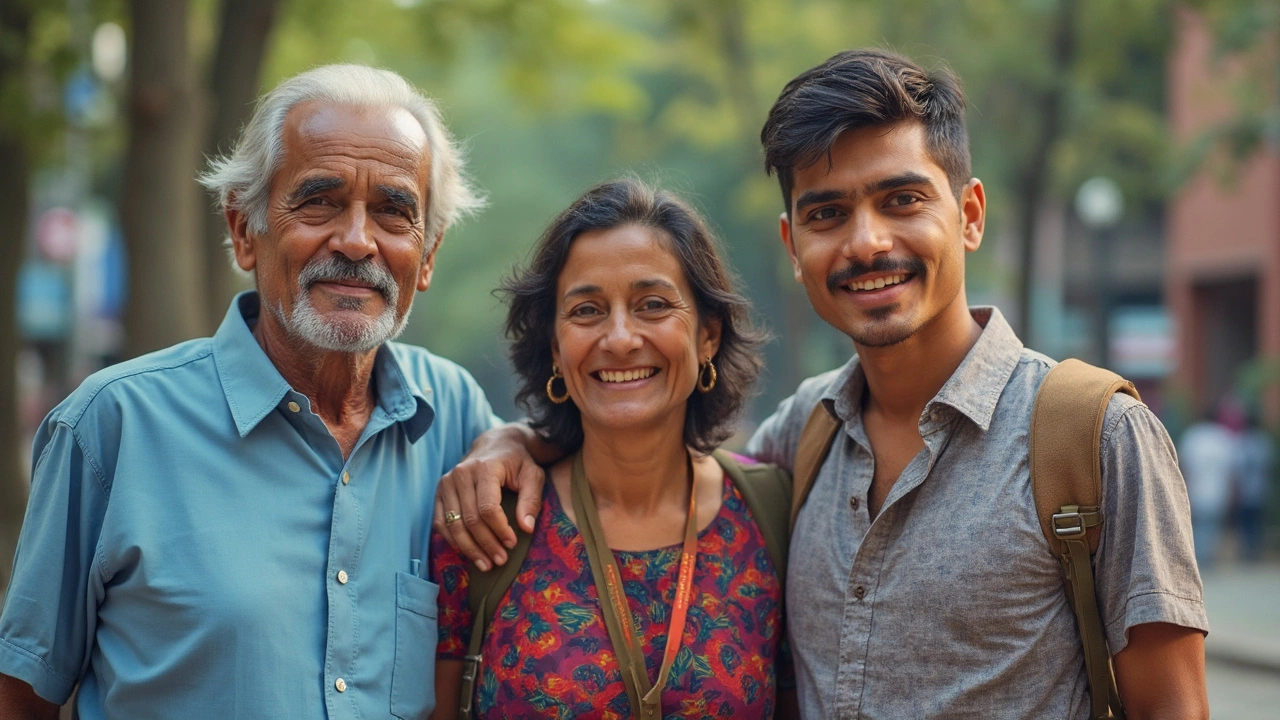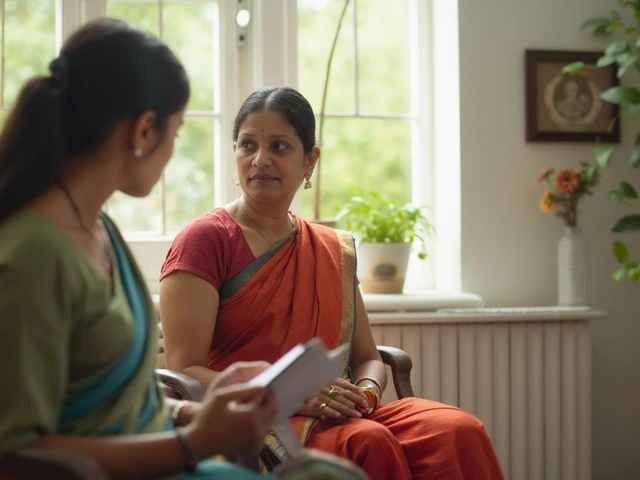The phrase "stage 4 cancer" instantly feels like a punch in the gut. Most people think it's a done deal—no way out. But is that true for everyone? Actually, a small number of people have made it through and lived much longer than anyone expected.
If you or someone you care about is in this tough spot, the first thing you need is honest info. What does "being saved from stage 4 cancer" really mean? Sometimes, it isn’t about a total cure, but about turning cancer from a deadly crisis into a manageable long-term condition. These days, some treatments can shrink tumors, slow things down, or even get rid of all visible cancer, at least for a while.
Yes, there are real stories of people who went into complete remission, even after doctors said chances were slim. It doesn’t happen every day, but every survivor story is worth hearing. These aren’t magic or miracles—they mostly come down to unique cases, the right treatment at the right time, and a bit of luck. Science is catching up fast, and new therapies pop up every year that give families more time, sometimes a lot more.
If you’re searching for hope, the facts matter more than hype. Stick around, because we’re going to look at what stage 4 really means, hear from survivors, check out cutting-edge treatments, and share hands-on tips that actually help in real life.
- What Stage 4 Cancer Really Means
- Survivors Who Beat the Odds
- Latest Treatments Changing the Game
- Practical Tips for Patients and Families
What Stage 4 Cancer Really Means
First things first—stage 4 cancer means the cancer has spread, or "metastasized," to parts of the body far from where it started. That’s the main difference from earlier stages. Doctors call this an "advanced" or "metastatic" cancer. It’s not about a specific size—it’s about location and how far it’s traveled.
Lots of folks wonder which cancers this affects the most. Stage 4 can technically happen with almost any type, but some—like lung, breast, colorectal, and prostate cancers—get to this stage more commonly because they’re likely to spread. This is the point when treatment is less about a cure and more about controlling the cancer and symptoms, trying to get as much good time as possible.
If we’re being real, the odds change a lot depending on the cancer type. Take a look at the table below for a snapshot of survival rates for a few of the most common stage 4 cancers. These rates come from recent American Cancer Society reports for 2024, and they show the percentage of people who are still around five years after diagnosis.
| Cancer Type | 5-Year Survival Rate (Stage 4) |
|---|---|
| Lung | 8% |
| Colorectal | 15% |
| Breast | 31% |
| Prostate | 32% |
| Pancreatic | 3% |
That looks rough, and honestly, it is. But it’s not zero. There are people in those numbers who have defied the odds. It’s also worth knowing that science is moving fast—each year the numbers get a little better for some cancers.
So, when you hear "stage 4," don’t picture the end of the road. Picture a tough fight, where the main job is to slow things down, manage symptoms, and—sometimes—get surprise wins. Remember, stage 4 cancer is just a medical label, not a crystal ball.
Survivors Who Beat the Odds
If you look hard enough, you'll find people who have walked away from a stage 4 cancer diagnosis when everyone thought it was impossible. These aren't just one-in-a-million tales you see in headlines. Real names and real faces come up in studies, support forums, and even the news.
Probably the best-known case is of Kris Carr, who was diagnosed in 2003 with stage 4 epithelioid hemangioendothelioma, a rare cancer that had spread to her liver and lungs. Doctors called her cancer incurable. Instead of giving in, she overhauled her health, tried different treatments, and focused on quality of life. She’s still here, two decades later. Her case isn’t the only one—there are people living years, even decades, with stage 4 breast or colon cancer. But let’s be super clear: these cases are rare and usually come from a mix of unique tumor biology, aggressive treatment, quick action, and sometimes experimental drugs or clinical trials.
Another example is Tom Brokaw, the famous journalist, who was diagnosed with stage 4 multiple myeloma in 2013. He used standard treatments paired with new targeted therapies, and today his cancer is stable. Research backs this up: some subtypes of stage 4 testicular cancer or melanoma now have 5-year survival rates hovering around 70–80% when caught at the right time and treated aggressively.
What does this tell us? Here’s what most stage 4 cancer survivors have in common:
- They moved fast once diagnosed—no waiting around or putting off treatment.
- Most took part in combination therapies: chemo, radiation, surgery, and newer immunotherapies.
- Many had strong support networks, which made sticking with tough treatments doable.
- Some found new hope by joining clinical trials that offered drugs not yet widely available.
This isn’t about false hope. If you hear stories about someone beating stage 4 cancer, remember the big picture: treatment options are expanding, and every year more lives are stretched beyond what used to be thought possible.

Latest Treatments Changing the Game
People used to treat stage 4 cancer by throwing everything at it—chemo, radiation, and hoping for the best. Now, things have changed in a big way. Doctors have a whole toolbox of new options that target cancer more directly and sometimes with fewer awful side effects.
The biggest buzz right now? Immunotherapy. This treatment helps your own immune system spot and attack cancer cells. Over the past few years, drugs like Keytruda (pembrolizumab) and Opdivo (nivolumab) have been approved for cancers that used to be total death sentences when advanced. Immunotherapy doesn’t work for everyone, but when it does, some people live way longer than expected—a few still cancer-free years later.
Another cutting-edge option is targeted therapy. These drugs are designed to go after specific things inside cancer cells, like broken genes that make the cancer grow. For example, a medicine like osimertinib for advanced lung cancer can keep things quiet for months or years if the person’s tumor has the right mutation. Genetic testing is way more common now for figuring out if targeted therapy could help.
Doctors are also blending treatments more than ever. Sometimes they give immunotherapy and chemo together, or targeted drugs with hormone therapy (especially for advanced breast or prostate cancers). The idea is to hit cancer from different angles and, sometimes, keep it guessing.
Some folks look to clinical trials for their best shot. This means trying a new treatment before it’s widely available. Honestly, new treatments can be risky, but many of the newest cancer drugs came through this route. It pays to check for trials, especially if the usual treatments haven’t worked.
Here’s a look at some survival numbers and approvals to give you the lay of the land:
| Type of Cancer | Breakthrough Treatment | Survival Odds (5-year, advanced stage) | FDA Approval Year |
|---|---|---|---|
| Lung (NSCLC) | Immunotherapy & Targeted Therapy | Up to 25% with immunotherapy | 2015 (Keytruda) |
| Melanoma | Immunotherapy (e.g. Opdivo, Yervoy) | 20-30% | 2014 |
| Breast (HER2+) | Targeted Therapy (Herceptin, Kadcyla) | Over half alive at 5 years if HER2+ | 2013 (Kadcyla) |
| Colon (KRAS wild-type) | Targeted Therapy (Cetuximab) | Up to 14% | 2012 |
If you want to know what’s really next for you or your family, ask your oncologist about genetic testing, immunotherapy options, and clinical trials. Staying current can open doors to treatments your local hospital might not offer. There’s no one-size-fits-all, but remembering that new treatments come out every year makes a real difference when the odds feel stacked against you.
Practical Tips for Patients and Families
Getting hit with a stage 4 cancer diagnosis turns life upside down, but you don’t have to figure it all out alone. Here’s what actually helps in the real world, beyond what you get in the hospital waiting room.
- Get a second opinion. Treatments change fast. A fresh set of eyes could lead to new options, especially if immunotherapy or targeted therapies are on the table.
- Ask about clinical trials. Right now, thousands of studies are testing new cancer drugs. Some patients who joined trials got access to cutting-edge medicine early, and it made a huge difference.
- Make the most of your care team. Oncologists, nurses, and social workers have seen it all. Don't be shy—they can help with everything from pain control to sorting out insurance paperwork.
- Keep all your records handy. Having treatment summaries, scans, and bloodwork in one place means you aren’t scrambling when new doctors get involved or you’re switching hospitals.
- Focus on eating and sleeping well. Even with all the stress, good sleep and decent nutrition really help your body keep up with tough treatments.
- Find support (even online). Talking to other families going through the same thing is a lifesaver. Search for groups tied to your type of cancer—forums, Facebook groups, even hospital meetups.
And for the families out there: don’t forget your own needs. Carve out moments for yourself and lean on friends willing to help with rides, meals, or just hanging out for a distraction.
Bottom line—ask questions, write things down, and remember there are no dumb questions. The more you know, the better shot you have at finding real hope and making the most out of each day.

 Does Walking Burn Belly Fat?
Does Walking Burn Belly Fat?
 Essential Advice: Navigating Conversations with Your Pain Management Doctor
Essential Advice: Navigating Conversations with Your Pain Management Doctor
 Can You Really Get Wegovy for $25?
Can You Really Get Wegovy for $25?
 Common Mistakes to Avoid in Ayurvedic Medicine
Common Mistakes to Avoid in Ayurvedic Medicine
 Inspiring Stories of Stage 4 Cancer Survivors: Breaking the Odds
Inspiring Stories of Stage 4 Cancer Survivors: Breaking the Odds